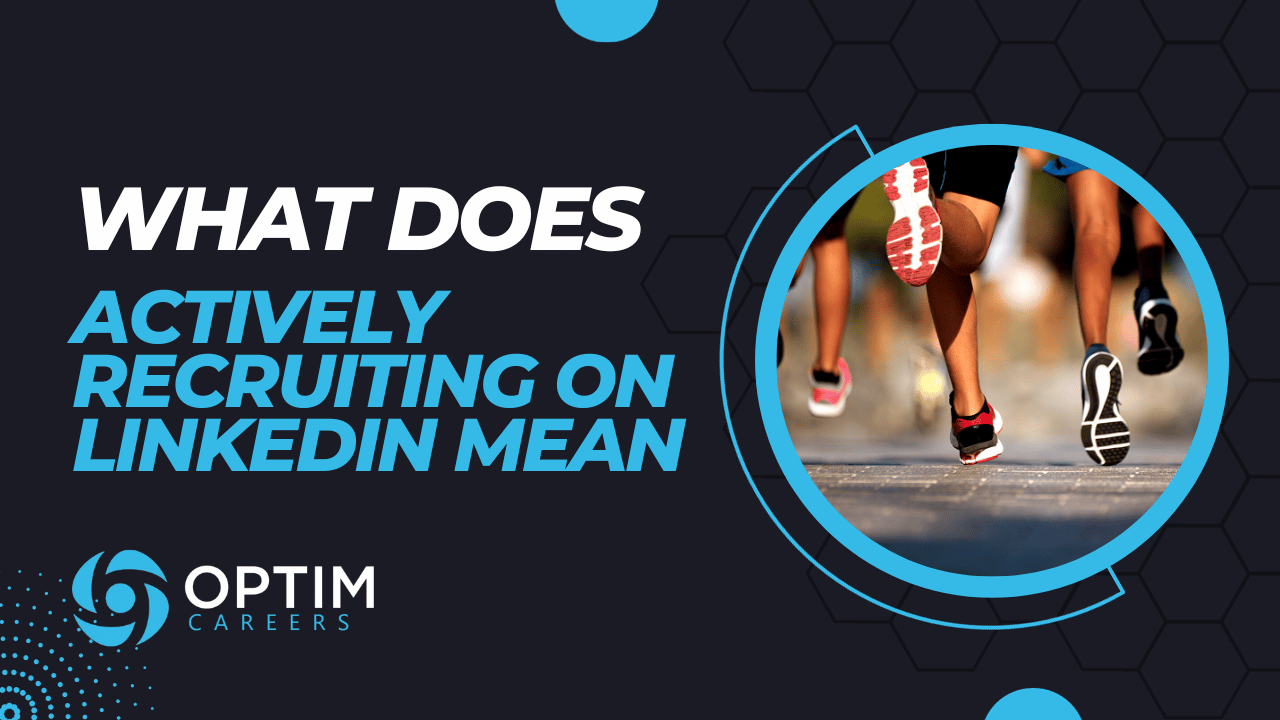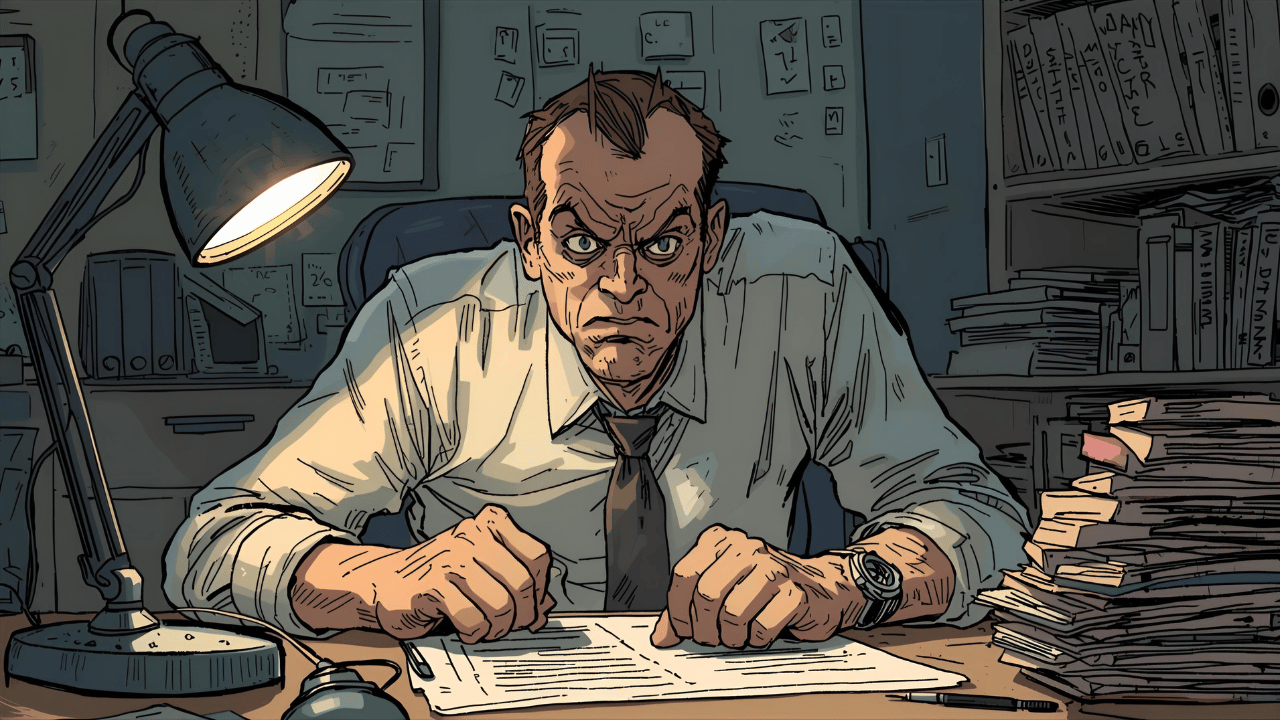What Does Actively Recruiting on LinkedIn Mean
If you’ve searched for jobs on LinkedIn, at some point you’ve noticed the tag on some jobs that says, “Actively Recruiting.” Today, I want to unpack exactly what that tag means, how companies get the tag, and how you can tailor your job search based on the tag.
What Does Actively Recruiting on LinkedIn Mean
To little surprise, LinkedIn doesn’t offer a clear-cut definition of what actively recruiting is, but we do know some things. We know that the tag is not something a recruiter can add to their job on their own. Rather, LinkedIn uses an algorithm to determine which jobs receive the tags and which ones do not.
The tag is based on two factors: how responsive the recruiter is to applicants and their outreach volume to potential candidates via InMails - that’s LinkedIn’s internal messaging feature (LinkedIn). We also know that it is based on activity in the past week, so you know that the tag is current if you see it.
How quickly or how often the recruiter reaches out is not something that LinkedIn shares. Nonetheless, this tag still has advantages for both recruiters and job seekers.
This may be LinkedIn’s way of weeding out recruiters and companies who are resume farming. Resume farming is the activity of passively recruiting for a role in anticipation that an opening may arise in the near future.
Applicant Review Time Tags
Similar to the actively recruiting tag, you may also see tags like the one in this image that indicates how long it takes the recruiter to review and respond to applications.
Problems With Actively Recruiting Tags
There are problems with the actively recruiting tags and just because a job doesn’t have it, doesn’t mean that the company is not actively recruiting. Not every company reviews and rates candidates within the LinkedIn app. Some prefer to operate within their own ATS (applicant tracking system). Some recruiters also don’t pay the $10,000 to utilize LinkedIn Recruiter and its 150 InMail credits.
Be conscious that just because a company doesn’t have the tag, doesn’t mean they aren’t actively recruiting. But the tag is a good way to identify some companies who are.
Actively Recruiting vs Passively Recruiting
Some of you may be asking what is the difference between actively and passively recruiting. At the core, actively recruiting means that there is an opening and the recruiting team is working to fill that opening as soon as possible.
Passively on the other hand could mean a couple of things. It could mean that they are anticipating a vacancy and have begun collecting applications to review in the upcoming weeks. It could also mean that a recruiter is open to people approaching them for networking. While I wouldn’t make this the crux of my job search strategy, I have known companies to create roles specifically for candidates they’ve met passively.
Benefits of the Actively Recruiting Tag
The tag helps both recruiters and job seekers in slightly different ways. Let’s break down the obvious and the not-so-obvious.
Benefits to Recruiters
I’ve seen different statistics, but most indicate that somewhere around 90% of recruiters have a LinkedIn profile and use the platform in some form for recruiting. That’s a lot of competition for candidates’ attention and attraction.
Having the actively recruiting tag listed on your jobs is a competitive advantage. Whether we like it or not, candidates (and applicants) have come to expect more than ever from the hiring process. Those of us who can boost our candidate experience by letting people know that we will review their resumes promptly and that we have an urgency to fill this opening will attract more candidates.
And knowing that you need to attract a lot of applicants to find a few qualified candidates, the numbers could help.
If an applicant knows that you are actively recruiting, they may be willing to spend more time applying to your jobs and completing your application process over others.
Benefits for Job Seekers
Job searching is stressful, especially for those of us who aren’t used to the waiting and rejection. Seeing the actively recruiting badge can give us peace of mind knowing that this company (at least for this job) will not drag their feet and delay. We know this opening isn’t a “planning for a future role” opening with no outreach expected in the upcoming weeks. This tag tells us someone is actively doing something with all these applications. And that actively doing something is reviewing resumes and reaching out to potential candidates.
While I don’t have any data yet, I suspect that focusing on applying for jobs with this tag would result in higher interview-to-application ratios - provided that you’re following other best practices such as applying for jobs you are qualified for and have the appropriate resume and LinkedIn profile to back up your claims.
In addition, targeting jobs with this tag is an excellent way to test your resume, LinkedIn profile, and overall messaging. If a job has the actively recruiting tag, the recruiting team is reviewing applications quickly. If you’re qualified for the job and not receiving phone calls in response to your resume, this is a good sign that you should reevaluate your resume and messaging.
How Do Recruiters Get the Actively Recruiting Tag on Their Jobs
LinkedIn tells us exactly what the algorithm measures to receive this tag. It’s based on two factors - responsiveness and outreach. Do these two things enough and LinkedIn will automatically assign the tag to your jobs.
Keep in mind that you have to do these activities within the LinkedIn environment. Emailing candidates outside of LinkedIn will not count. Also, be mindful of who at your company is posting jobs. The job poster is the one that must do these activities to qualify for the tag.
Can You Filter Jobs on LinkedIn by Actively Recruiting
Unfortunately, LinkedIn doesn’t have a filter for this tag (yet). I would still recommend prioritizing these jobs when applying, but sadly there is no way to filter them.
How to Find Recruiters Who Are Actively Recruiting
You may also be wondering, how do I find recruiters who are actively recruiting outside of job postings? The easy answer is to look for recruiters with the #hiring badge on their profile picture. This indicates that the recruiter has an open job posted on LinkedIn.
You can then view their profile and see what jobs they are hiring for. A link to their job postings will sit right below their profile headline and location.
LinkedIn requires that they have an active job posting in order to display the hiring badge on their profile picture; however, it doesn’t mean that they are “actively recruiting” in the same sense as described earlier. The jobs they have posted may not have the actively recruiting tag, meaning that they haven’t met the algorithm’s required activity level.
Before you reach out to a recruiter, be sure that your profile is updated and reflects the qualifications for the job you are pursuing with them. Things to consider include having a clear job title, functional skills, job level, and industry.
Similarly to the hiring badge, you can also set your profile status to indicate to recruiters that you are open to new jobs. You can elect to add the green open to work banner on your profile image or not, but either way (confidentially or not), setting your profile open to new jobs will allow recruiters who pay for LinkedIn Recruiter to filter you into their search results by using this badge.
What About Old Jobs With the Actively Recruiting Tag on LinkedIn
Someone asked me about a job that had the actively recruiting tag but was posted 2 months ago. This is not a red flag. This is a great sign.
Most likely they have applicants for the job, they may even have a lot of applicants, but they probably aren’t qualified applicants. They are still aggressively working on filling the job, otherwise they wouldn’t have the tag. Remember, the algorithm measures their activity.
If you see a job like this and you’re qualified, and your resume shows those qualifications, this is a sign from the universe to apply now. The recruiter is still active on the job and has some level of urgency to fill it. Don’t let the age of the job posting fool you.
What Does Actively Recruiting on LinkedIn Mean Recommended Reading
Job Offer Taking Too Long [Here’s Why]
Cole Sperry has been a recruiter and resume writer since 2015, working with tens of thousands of job seekers, and hundreds of employers. Today Cole runs a boutique advisory firm consulting with dozens of recruiting firms and is the Managing Editor at OptimCareers.com.

















A list of the best 40 excuses I’ve ever heard and what to say for to your boss for each of them.